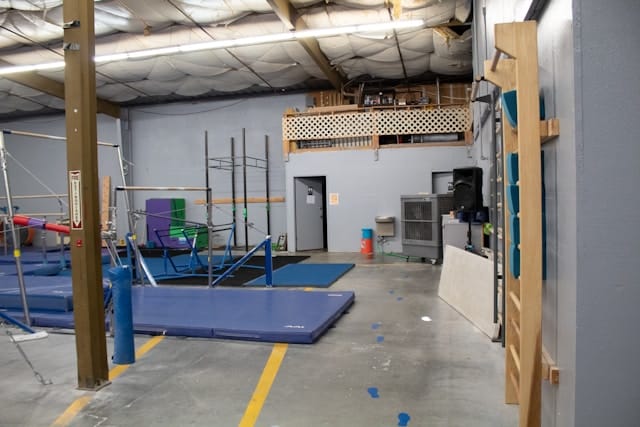What Are the Best Moisture-Resistant Materials for a Basement Home Gym?

When you’re planning to install a home gym in your basement, selecting the right type of materials is essential. It’s necessary to consider the unique environment of the basement, which tends to have higher humidity levels, making moisture-resistance a crucial factor. Using the right materials can prevent damage, reduce maintenance, and ensure a longer lifespan for your gym. Let’s look into some of the best moisture-resistant materials suitable for a basement home gym.
Using Moisture-Resistant Flooring
The flooring for your basement gym should be the first consideration. It needs to be able to handle sweat, spills, humidity, and the weight of gym equipment. Rubber flooring is one of the best options.
Cela peut vous intéresser : How to Set Up a Safe and Inviting Home Daycare for Multiple Age Groups?
Rubber is highly durable and resilient, ideal for absorbing the impact of heavyweights and equipment. It’s also water and slip-resistant, providing a safer environment for your workouts. Rubber can be purchased in tiles or rolls and is relatively easy to install.
Vinyl flooring is another excellent option. It’s waterproof, easy to clean, and can mimic the look of more expensive flooring types like hardwood or stone. Vinyl is also resistant to mold and mildew, both of which can be common in basements.
Cela peut vous intéresser : How Can You Design a Home Theater with Acoustic Panels for Optimal Sound?
Selecting Moisture-Resistant Wall Materials
Next, let’s focus on the walls. The key is to choose materials that can withstand moisture and prevent the growth of mold and mildew. Cement board is a strong contender.
Cement board is made from cement and reinforcing fibers, making it extremely resistant to moisture, mold, and mildew. It can be used as a drywall substitute and is a great choice if you’re considering installing a heavy mirror or wall-mounted equipment.
Another option is green board drywall. This type of drywall is treated with a water-resistant coating, making it a suitable choice for moist environments. It’s important to note that while green board can resist moisture, it’s not entirely waterproof.
Opting for Moisture-Resistant Ceiling Materials
The ceiling of your basement gym also needs careful consideration. Suspended or drop ceilings are often used in basements because they provide easy access to utilities while also adding a layer of insulation to keep the space warmer.
Drop ceiling panels are typically made from mineral fiber or fiberglass, both of which are moisture-resistant. They also come in a variety of styles, making it easy to find an option that matches your aesthetic.
Mold-resistant drywall is also a practical choice for basement gym ceilings. It’s treated with antimicrobial agents to prevent the growth of mold and mildew.
Choosing Moisture-Resistant Insulation
Insulation is essential for any basement, but especially for a home gym where you’ll be generating a lot of body heat. Closed-cell spray foam insulation is one of the most effective options.
This type of insulation has excellent moisture and vapor-resistance properties. It’s also incredibly energy-efficient, helping to keep your basement warm in winter and cool in summer.
It’s worth noting that while insulation is an important part of your basement gym, it should always be installed by a professional. Incorrect installation can lead to issues with moisture and mold down the line.
Investing in Moisture-Resistant Furniture and Equipment
Last but not least, consider the furniture and equipment in your gym. Opt for materials that are easy to clean and don’t absorb moisture. Metal is a good choice for equipment— it’s sturdy, easy to clean, and resistant to moisture and damage.
For furniture, consider options like vinyl or faux leather, which are water-resistant and easy to clean. Avoid wood and fabric, as they can absorb moisture and become breeding grounds for mold and mildew.
In conclusion, when setting up a basement home gym, it’s crucial to consider the unique environment of the space. By choosing moisture-resistant materials like rubber flooring, cement board walls, drop ceilings, closed-cell spray foam insulation, and water-resistant furniture and equipment, you can create a durable, low-maintenance home gym that will serve you well for years to come.
Choosing Moisture-Resistant Lighting Fixtures
Selecting the appropriate lighting fixtures for your basement home gym is another vital consideration. Lighting plays a crucial role in creating a suitable environment for exercising, while also adding to the aesthetic appeal of the gym. This section will discuss some moisture-resistant lighting materials.
For lighting fixtures, recessed lights can work well in a basement gym. These lights are installed into a hollow opening in the ceiling, offering a sleek and clean look. Recessed lights also have the benefit of being resistant to moisture, making them an excellent choice for potentially damp environments like basements.
LED lighting is another reliable option. LED lights are known for their energy efficiency, but they also have a solid level of resistance to moisture. Moreover, they offer a wide range of light temperatures, enabling you to create the perfect atmosphere for your workouts.
Lastly, when choosing lighting for your gym, opt for fixtures made with metal or plastic. These materials are typically more resistant to moisture than fixtures made with materials like wood or fabric, which can degrade over time due to humidity or water exposure.
Maintaining a Moisture-Resistant Basement Gym
Maintaining the condition of your basement home gym is equally as important as choosing the right materials. Regular maintenance can help prolong the lifespan of your gym and keep it in top shape for optimal use. This section provides some tips on maintaining your moisture-resistant basement gym.
Firstly, it’s crucial to regularly clean and disinfect your gym, especially the equipment. Sweat and moisture can build up over time, causing damage and possibly leading to the growth of mold and mildew. Using a disinfectant cleaner designed for gym equipment can help keep everything in good condition.
Ventilation is also key in maintaining a moisture-resistant environment. Consider installing a dehumidifier to help regulate the humidity levels in your basement. This can help prevent the buildup of moisture, which can lead to mold and mildew growth.
Lastly, regular inspections can help catch any potential issues early. Look for signs of water damage, such as discoloration, peeling paint, or a musty smell. If you notice any of these signs, it’s best to address the issue as soon as possible to prevent further damage.
Conclusion
To conclude, creating a moisture-resistant basement home gym involves careful planning and thoughtful selection of materials. From flooring and wall materials to lighting fixtures and insulation, every element plays a crucial role in ensuring the durability and longevity of your gym. Regular maintenance is also key in keeping your gym in optimal condition. By investing time and resources into choosing the right materials, you can create a basement gym that is not only functional and attractive but also resistant to the challenging environmental conditions of the basement.
